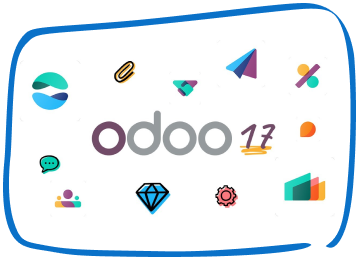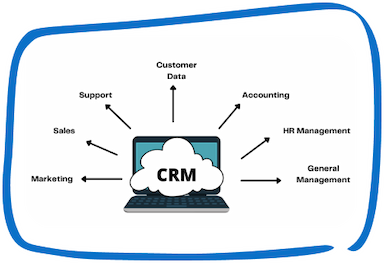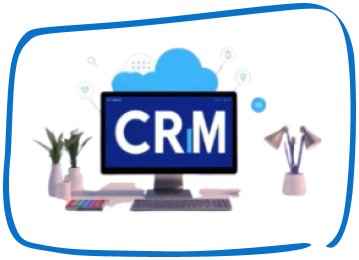The process of measuring important workforce data, frequently using human resources information systems, is known as HR reporting (HRIS).
These systems assist HR teams in managing a lot of the daily tasks associated with payroll, benefits, and other transactional HR needs in addition to tracking and measuring data.
These reports should give a thorough assessment of what’s effective and ineffective while identifying certain problems that have an impact on human resource management.
Your organization’s people management objectives will determine the HR data and KPIs utilized to identify workforce trends.
For instance, you would want to use performance statistics to comprehend what motivates your skilled employees to achieve at their peak level if you want to hire the proper personnel for your firm.
Various HR reports and indicators to monitor
When compared to other data points, many HR metrics, or key performance indicators (KPIs), produce greater results. With the use of this pooled data, past trends can be statistically correlated.
Observing metrics on staff retention, for example, might help identify opportunities for organizational improvement.
Here are the four main HR report categories and the major KPIs they provide.
1. Recruiting report
It’s crucial to monitor your hiring process if you’re hiring (or planning to hire) new staff.
You may expedite the process and locate the top candidates for each position by evaluating how successful your recruitment process is.
The following metrics should be considered while creating a recruiting report:
Function type
This measure often describes the various positions inside a company, both in terms of the departments and geographical regions.
New hires and Open positions
These metrics display the quantity and/or percentage of available positions you currently have, the number of employees who joined the company within the previous year, and other pertinent information.
Time to fill open positions
This gauges the amount of time that passes between the approval of a job request and the acceptance of an offer.
This metric measures the effectiveness of your hiring process by measuring the average time to fill.
Recruitment costs
The price tag incurred by external staffing firms, job advertisements, and lost productivity contribute to recruitment activities’ overall cost.
You can improve your hiring process by understanding the cost per hire for each job type.
Rate of recruitment conversion
You should determine your recruitment conversion rate in addition to recruitment expenditures.
This tally represents the proportion of job candidates who are hired. You can determine the success of your recruitment efforts by analyzing this.
2. Performance management report
Managing staff performance is essential to your company’s success.
You may measure a few metrics to get a clear picture of how well your employees are doing and where they might need further help or training.
The following metrics are considered while creating a performance management report:
Productivity reports
Consistently track each employee’s overall productivity using uniform metrics. Additionally, you can monitor productivity across teams, divisions, or locations.
Engagement and satisfaction reports
You want to gauge employee satisfaction and engagement, much like you would with productivity. The presence of engaged staff is a sign of positive workplace culture. Additionally, it may improve staff retention.
Absenteeism rate
This displays the typical proportion of time, or days, that employees missed over the prior quarter.
Training costs
This refers to the entire amount of money spent on training both new hires and current workers. Travel expenses and the cost of training materials should also be included.
3. HR administrative report
Administrative reports are a useful tool for giving employers a broad view of their business.
Look at the following indicators when creating administrative reports:
Active employees:
This displays how many people are currently on your payroll. You should constantly keep a precise tally of the number of full-time and part-time staff you have.
Full-time equivalent
The number of full-time hours put in by one employee is referred to as an FTE. This system translates the number of part-time worker hours into the number of full-time worker hours.
A full-time employee (FTE) works eight hours per day for five days a week, or 2,080 hours in a year.
Male-to-female rate
The purpose of recording gender statistics is to determine salary disparities and to address some difficulties with healthcare-related insurance costs.
Education level
This evaluates an employee’s general suitability for their current positions to some extent. It also aids in calculating the proportion of employees with graduate and four-year degrees in your company.
Turnover rate
Turnover in human resources refers to the percentage of employees who leave your company for voluntary or involuntary reasons, such as termination, retirement, or replacement.
You can also monitor dismissal rates, the average length of stay, and retention rates.
4. Compensation report
For businesses to understand how much they are spending on their staff, a compensation report is crucial. Take into consideration the following metrics while preparing compensation reports:
Employee pay
Keep track of the wages you give your staff. This can include basic pay, OT compensation, paid time off, payroll deductions, and additional incentives, among other types of information.
Cost of Absence
Unscheduled absence is the primary focus of this statistic, which is crucial for identifying one of the most expensive hidden expenditures in the workplace.
Cost of labor
This represents the total amount paid to employees, including their salaries, benefits, and any payroll taxes.
There are two types of labor costs: direct and indirect (overhead).
Why is reporting on HR required?
The relevance of HR topics including employee engagement, applicant experience, and also employee experience is steadily increasing.
Making important recruiting or labor management decisions solely based on emotions is no longer advised.
Your organization’s development and success can be significantly impacted by every HR decision you make.
Because of this, implementing a data-driven decision-making process is essential if you want to boost corporate value, employee experience, and growth.
You can find all the information you need about your personnel and how business operations affect them in HR reports.
As a result, you may reinforce the HR procedures that support your employees and address any problems that prevent them from doing their best job more quickly and strategically.
You can do this to save time, money, and effort.
Additionally, C-level managers and executives can modify their management techniques using the information from HR reports. This encourages teamwork and helps each employee perform at their highest level.
Who requires accessibility to HR reports?
All levels of your organization’s employees will require access to some HR data, but the specific reports to which they will have access will primarily rely on their position, title, and level of seniority.
Employees should, for instance, have access to their attendance, leave, performance, and course reports.
The reports of their complete team’s attendance, timekeeping, performance, leave, and general information will be accessible to managers.
The reports of their whole workforce will be accessible to C-level executives and HR personnel, enabling them to see trends in the workforce and make wise hiring and personnel management choices.
HR Dashboard
HR managers can view a tremendous quantity of data on an organized, practical interface with an HR dashboard.
You can get a quick peek at all the crucial information with an HR dashboard.
A clear breakdown categorized by time or price is extremely helpful in fields like talent management.
Making HR reports from scratch is no longer necessary.
It takes a lot of work to collect data from several disconnected systems and combine it into a spreadsheet for analysis.
For this reason, a lot of HR software packages provide functionality specifically for HR reporting.
Your HR data will remain aggregated in a single, central location because comprehensive HR systems include modules that handle everything from onboarding to offboarding.
No matter how many employees you have, you can prepare HR reports quickly because the system is always tracking and updating the data.
Additionally, custom reports are quickly made in a few quick steps.
For instance, you might design a report specifically for this purpose if you wanted to outline the various factors that contribute to the turnover of your company.
Penieltech is a provider of HR software in Dubai, UAE. HRMS is the greatest HR and payroll software. Penieltech offers the demo at no cost.
They will offer training on HRMS and Payroll Management Software from our accounting specialists. Our HRMS and Payroll Software is simple to use and comprehend.
Speak with Our Team!
4.9 Stars
1k+ reviews on






